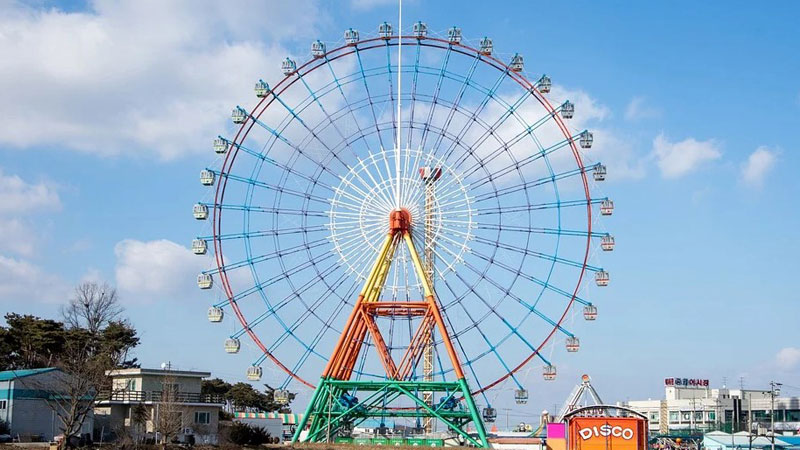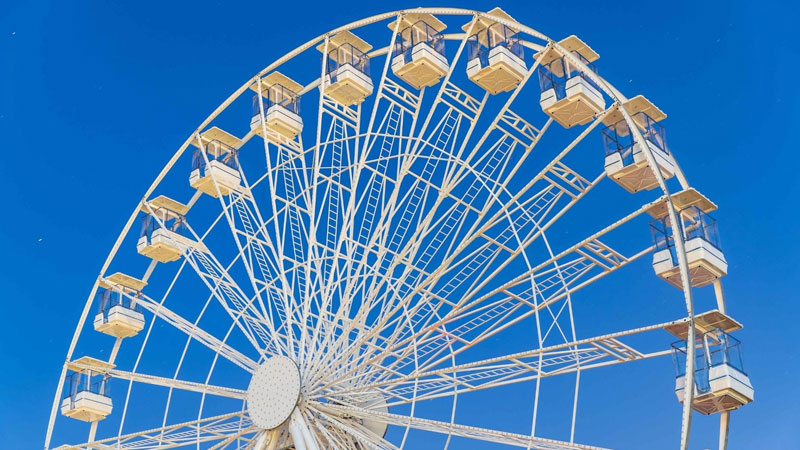The differences between a big Ferris Wheel and a mini Ferris Wheel boil down to more than size. The number of people that they need to operate, the number they can accommodate, the amount of maintenance that they need, the work needed to transport them, and even the inspections needed to operate them all vary. So to do the people that they attract and the reasons that you would have one in your list of available rides versus the other. While many amusement parks and traveling ride shows will choose to have both, when first starting out or looking to add a single ride to your own business, understanding the differences between them can be extremely important.
Mini wheels can be as short as 12 feet, and go up to about 28 feet in height. The basic versions trend between 52 and 72 feet, while the largest of the Ferris wheels for sale can go up to 500 feet in height, but commercial height tends to be 120 feet or fewer. This also translates across to their footprint, with the larger models taking up several trailers worth of footpath space, an important consideration if you are trying to maximize the number of rides for kids available within your amusement park. The larger ones also require a larger exclusion zone to pass inspections and keep people away from the controls and inner workings. This can make them a choke point for smaller theme parks, but can make them a great location for food and drink vendors within larger carnivals.

The smaller, or mini, versions appeal heavily to families with smaller children. They generally will accommodate an adult with their child, but they tend to go slower and not go up as high, making them a great option for smaller children just like the kiddie rides. The larger ones, the thrill rides, tend to attract thrill seekers and couples, making the majority of your customer base teens and couples without small children. Understanding the demographics of the people in the areas that you are serving may help you choose between the two if you find yourself unsure which would work best for you.
Another consideration when looking at these rides is the number of trailers needed to transport their parts, with some of the largest wheels taking multiple trailers to move the ride. This translates across to more time breaking down and setting up the funfair rides for sale, more fuel if you are moving them, more storage space if you are storing them, and more time spent by employees on maintenance. The smaller options are often favored by traveling amusement parks as they do not come up against weight restrictions on roads, allowing them access to more locations.

Finally, the smaller ones can be operated by a single operator, while the larger ones tend to need multiple operators. This can translate across to a savings in costs if you have enough younger families in your areas to justify the smaller models.
The biggest differences between these amusement rides are of course the sizes from the manufacturer’s website – www.bestonamusementparkrides.com, but their applications and the needs of the communities that you are serving are also important differences to take into account. There is no one ride that is better than the other, but instead rides that work better for your personal needs.